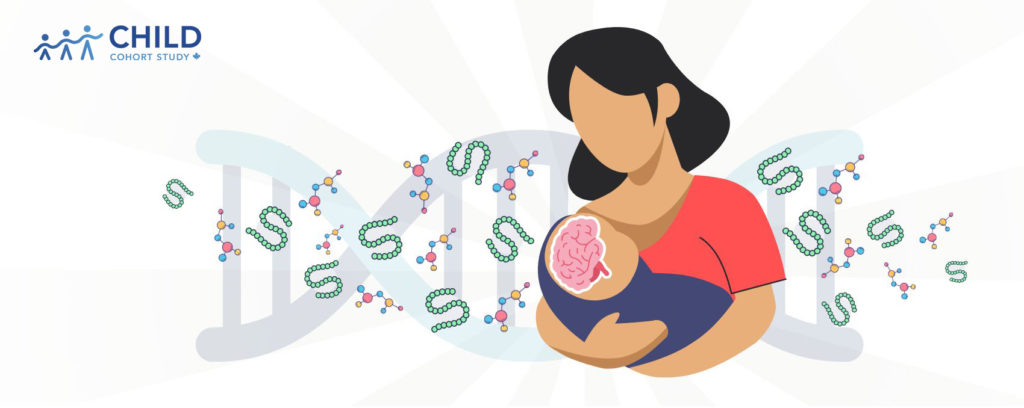
Research powered by CHILD data has identified components of breastmilk associated with a child’s early neurodevelopment. The research found the levels in breastmilk of select fatty acids and sugars to be related to a breastfed infant’s cognitive, language and motor development at 1 year. They also found that these relationships are influenced by whether the mother has a particular genetic trait that influences the content of her milk.
“It has long been known that lengthier and more exclusive breastfeeding is related to better neurodevelopmental outcomes in children,” notes lead author Dr. Sarah Turner, a post-doctoral researcher at the University of Manitoba and Manitoba Centre for Health Policy. “We set out here to better understand this relationship in terms of the exact breastmilk components involved.”
For the study, published in Frontiers in Nutrition, the researchers analysed data from 240 parent-infant pairs from the Edmonton site of CHILD. This included an analysis of moms’ breastmilk samples collected 3-4 months after giving birth, focusing on 20 fatty acids and 19 sugars, and the results of cognitive, language and motor development scores from tests given to babies at 1 and 2 years of age.
Looking at neurodevelopment at one year, the researchers found that having higher amounts of certain saturated fatty acids in breastmilk was related to better motor development, while certain unsaturated fatty acids (n-3 and n-6) were related to lower cognitive and motor development scores.
Some of the complex sugars in breastmilk, known as human milk oligosaccharides (HMOs), were also related to language and motor scores. Interestingly, these relationships depended on moms’ secretor status—that is, whether she has an active or inactive FUT2 gene, which influences her breastmilk composition. Having an active gene (or not) resulted in different sugars being linked to better neurodevelopmental outcomes.
“This tells us that the way these sugars are used in the infant body may depend on genetics and be more complex than we think,” observes Dr. Turner: “It’s a reminder that human milk is a living biological system and there is so much more to learn!”
“This is the largest study to date to examine relationships between both human milk fatty acids and HMOs with child neurodevelopment at an early age,” comments senior author Dr. Meghan Azad, who heads the Manitoba Interdisciplinary Lactation Centre (MILC) at the Children’s Hospital Research Institute of Manitoba.
“It takes us a step forward in understanding the mechanisms behind breastmilk’s influence on early brain growth and development.”
